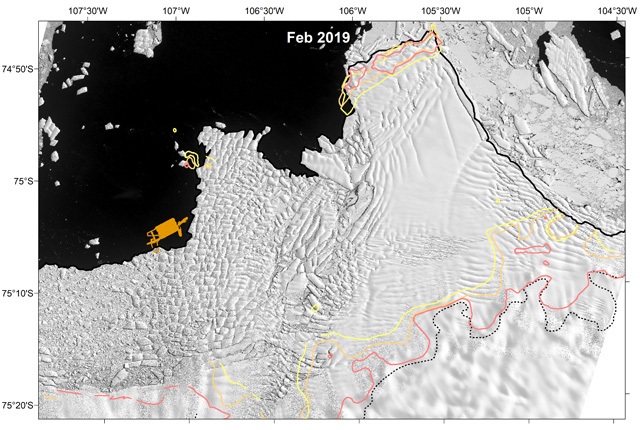by Mia Jankowitz: An Antarctic body of ice nicknamed the ‘Doomsday Glacier’ could melt far faster than previously expected and is holding on “by its fingernails,” according to new scientific research…
The melting of the Thwaites Glacier – which is around the size of Florida – could raise sea levels by up to two feet.
It’s that, and the fact that it acts as a buffer between warming seas and the much larger West Antarctic ice sheet, that gives it its ominous nickname.
However, the new study, led by the University of South Florida (USF), found that the Thwaites glacier has melted far faster in past centuries than has been observed in recent years – meaning that a similar brisk pace of retreat could be triggered in the future.
The researchers learned this by using underwater drones to map the sea floor under the glacier for the first time.

The ridges they mapped are “like a footprint” showing where the base of the glacier has previously sat, according to the news release
It shows that at some point in the last 200 years it had contracted twice as fast as has been observed in recent years, the release said.
“Thwaites is really holding on today by its fingernails, and we should expect to see big changes over small timescales in the future – even from one year to the next – once the glacier retreats beyond a shallow ridge in its bed,” said Dr Robert Larter, a marine geophysicist from the British Antarctic Survey who-authored the study.
Alastair Graham, the USF marine geophysicist who led the study, said: “Just a small kick to Thwaites could lead to a big response.”
Thwaites’ rate of melting was previously mapped using satellite imagery.
In 2020, a study of those images found that Thwaites, and its neighbor the Pine Island Glacier, were breaking apart more quickly than previously believed even then, as Insider’s Susie Neilson reported.
Thwaites has been in part protected by an ice shelf that scientists have seen rapidly deteriorate. In December last year, scientists predicted that that shelf is on track to melt within five years.

















































